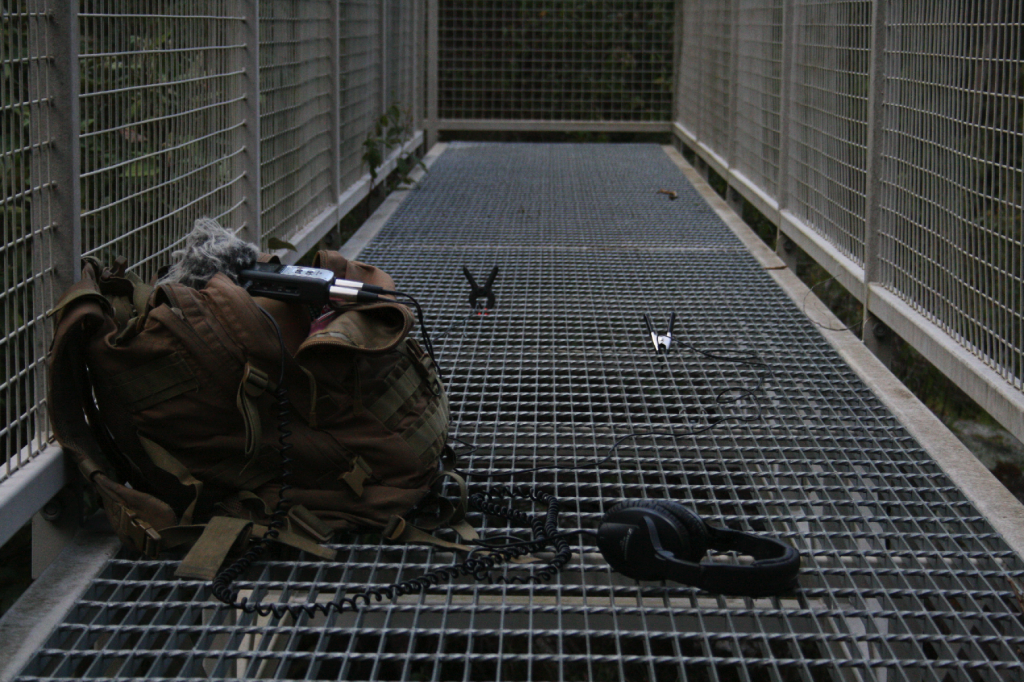()
The last couple of days have been spent exploring the sonic qualities of a small bridge crossing a river, on a walking track near Fainter Falls. The metal span passes over a connecting tributary that feeds into the main river flowing down from Mt McKay power station, the volume of water passing underneath producing a consistently heavy roar. The intensity of the river underneath the bridge is such that it translates to vibrational activity in the metal structure of the bridge itself, subsequently picked up by contact mics that I placed at various points. I also noticed that any kind of transient activation (stepping, jumping, hitting the fencing, etc) would produce strong, gong-like tones, with a subsequent wash of percussive rattle. I also made numerous acoustic recordings of the ambient sound of the river’s roar.
After recording a sufficient amount of the water vibration padding, I set about exploring how to “play” the bridge in various ways. My time at the BCSC has interestingly seen me become more open minded to myself playing a part in my sound works – in the past, I have been strict with capturing only naturally sounds, any activation of a body or structure has been from wind, water, fatigue, etc. I am still very much interested in this kind of naturally occurring activation, but seem to be involving more of my past practice as a musician/percussionist.
The material recorded here will most likely form a finished piece of its own, to be included in what will be an EP that features sound works created from BCSC residency material. Other tracks will include the Junction Dam exploration recordings, as well as the Mt McKay tower recordings, and perhaps some captures from Pretty Valley.
